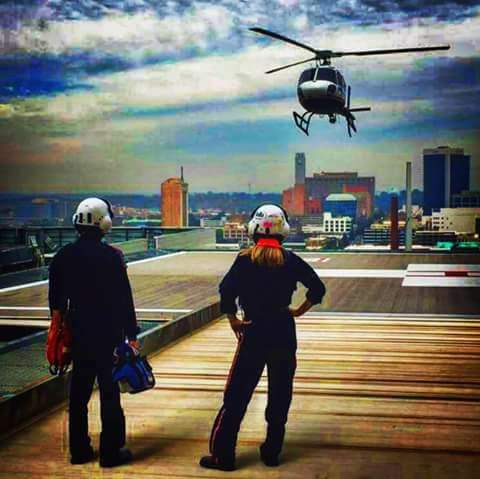Is it time for a change of pace? There are programs sponsored by the airlines in which a commercial helicopter pilot can receive transition training and land an airline job. It's happening all over HEMS, right now!
We tend to favor competitive environments, you either get better or you get lost. The developing competition for a relatively scarce resource - a commercial pilot - has been brought on by the conditions created by aviation employers. When Sully said (the airlines) should respect the profession, no one listened. "The life" of an airline pilot - especially one flying for a regional carrier - became less and less desirable. This was all made starkly apparent during the investigation into the Colgan Air crash near Buffalo New York. Low wages and crash-pad life drove prospective candidates, especially rotor-pilots coming out of the military, into off-shore or HEMS jobs.
Perhaps the airline industry has passed the nadir; perhaps becoming an airline pilot will once again be a good-paying, respectable employment option. .As the airlines cherry-pick the best rotor-pilots - many of whom have and will continue to come from the ranks of HEMS - a predictable set of events will occur.
First, companies will try and force overtime on current pilots. Lean is cheap, and there are more vacancies in HEMS than ever before. Eventually, there will be too many holes to fill. As well, HEMS companies will look to hire the very young and the very old. They will dip deeper and deeper into the labor pool.
We can imagine a conversation like this between two new-hire HEMS pilots.
"Hey, young fellow! When I started flying, you were in diapers."
"Oh yeah, Gramps? Well, when I finish flying, it'll be you in the diapers. As a matter of fact, you look pretty 'dependable' today!"
Barring restraint, and with bases out of service, some companies will hire pilots previously let go; pilots who are too new to get any other job or who have hit the 65 year age limit for part 121 flying. Companies will also seek to lower the hiring-requirements for HEMS pilot. If the rules get in the way of making money, the first thing you do is change the rules.
We expect that these developments will show up in the accident and error rate, and they will result in clinicians departing HEMS after becoming dismayed at the lack of proficiency of the persons flying. (At least those clinicians who know what a lack of proficiency looks like.) Flying a single-pilot VFR helicopter to an accident scene at 3am is different than flying an airliner as a member of a flight crew. It's not necessarily harder, but it is different. It requires an entirely different set of interpersonal and aviation skills.
The transitioning rotor pilot will serve in the airlines as a co-pilot until his or her performance has been verified. A retiring airline pilot entering HEMS will be given 8 to 10 hours and a check ride before being cast loose upon the skies. And the med crews. When we flew BKs, A new pilot coud gain initial operating experience with a training captain. Not so in most singles.
At some point, insurance rates and astronomical lawsuits will drive the fix most strenuously avoided by the HEMS industry.
Wages will increase to the level of the economic value the pilot brings to the endeavor.
After all, the airlines are hiring.
